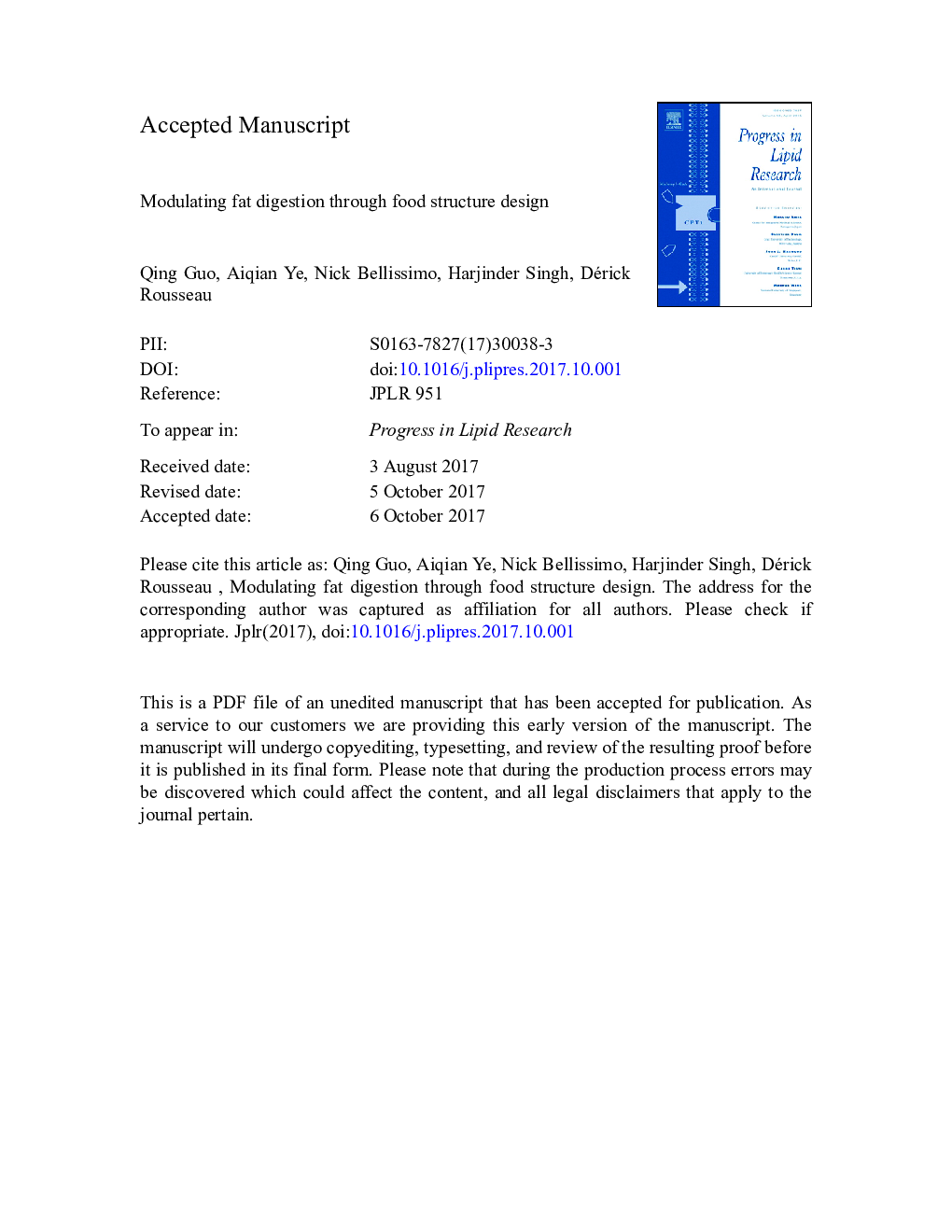| Article ID | Journal | Published Year | Pages | File Type |
|---|---|---|---|---|
| 8358831 | Progress in Lipid Research | 2017 | 50 Pages |
Abstract
Dietary fats and oils are an important component of our diet and a significant contributor to total energy and intake of lipophilic nutrients and bioactives. We discuss their fate in a wide variety of engineered, processed and naturally-occurring foods as they pass through the gastrointestinal tract and the implicit role of the food matrix within which they reside. Important factors that control fat and oil digestion include: 1) Their physical state (liquid or solid); 2) Dispersion of oil as emulsion droplets and control of the interfacial structure of emulsified oils; 3) The structure and rheology of the food matrix surrounding dispersed oil droplets; and 4) Alteration of emulsified oil droplet size and concentration. Using examples based on model foods such as emulsion gels and everyday foods such as almonds and cheese, we demonstrate that food structure design may be used as a tool to modulate fat and oil digestion potentially resulting in a number of targeted physiological outcomes.
Keywords
hMPCMCTFFAsβ-LgMFGMLCTmedium-chain triacylglycerolGITBSSLbile salt stimulated lipaseSFCLong-chain triacylglycerolO/WScTβ-LactoglobulinLinoleic acidFree fatty acidsnon-esterified fatty acidsMedium-chain fatty acidsNEFAsEmulsionTAGsTriacylglycerolsGastrointestinal tractoil-in-waterFood structuremilk fat globule membraneSolid fat contentHydroxypropyl methylcelluloseDigestion
Related Topics
Life Sciences
Agricultural and Biological Sciences
Food Science
Authors
Qing Guo, Aiqian Ye, Nick Bellissimo, Harjinder Singh, Dérick Rousseau,
